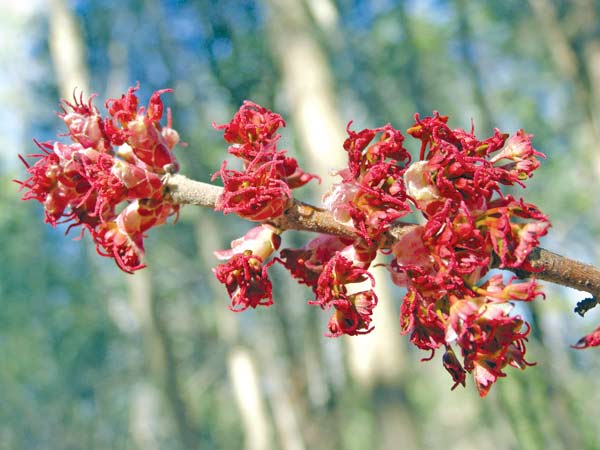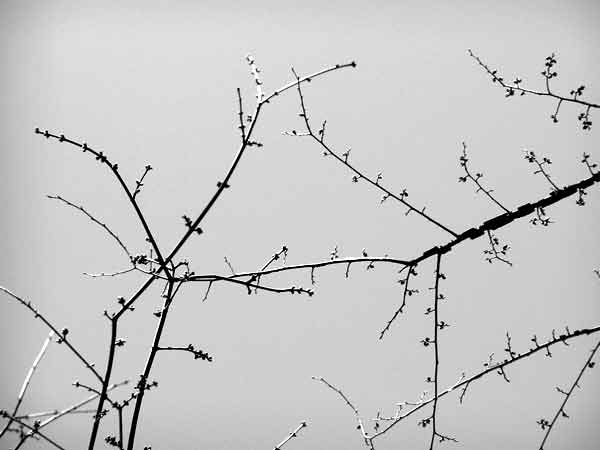Taking a closer look

Red flowers of female Red Maple. Photo by Ken Moore.
By Ken Moore
Flora Columnist
In February, I love observing the daily swelling of buds, the bright coloring of stems and the flowering of tiny winter annuals on the ground and shrubs and trees above. Simultaneously, this constant assault of springtime awakenings makes me panic with the realization that well-intentioned chores and worthy projects set aside for the winter months are far from completed.
My moods of panic result in negative outbursts like “I hate spring!†and “spring is highly over-rated!†My annual vocal springtime pronouncements are by now expected by friends. My gardening friend, Sally, always thoughtfully reminds me that the word “hate†should be eliminated from one’s vocabulary and she offers sincere condolences that I find anything but joy with the re-awakenings of spring.
On reflection, I realize that my indoor winter projects never get my necessary attention because there is so much of interest in the outdoors.
For instance, in spite of the continuing freezing weather, we are entering the peak season of flowering of Red Maples, Acer rubrum. During the next several weeks, we will be seeing dense red clusters on leafless branches. These clusters of tiny flowers can be fully appreciated only with a close-up view with a sharp eye. I make use of a 10x hand lens, though most any hand-held reading magnifiers will suffice.
Maple flowers lack the obvious petals we see on most flowering plants. A close look will reveal that these clusters contain only female or male parts on each flower. Now we’re entering a botany lesson as well as taking a peak at the sex lives of plants. Maple trees are described as polygamous. Some trees have only male flowers, clusters of stamens; other trees have only female flowers, clusters of pistils. Sometimes a single tree will have perfect flowers – i.e., male and female parts in the same flower. The male tree of pollen-bearing stamens has an overall yellowish tint. The female flowers have two embryonic winged seeds, ovules, having a common stalk, the style, splitting at the top into two curly tips, the stigmas. Wind-borne pollen from the stamens lands on the stigmas to fertilize the little ovules. The little ovules, in just a few weeks, grow to become those fun-to-watch and fun-to-throw winged “helicopter†maple seeds we know so well. The female trees are generally the ones with the brilliant red color.
Take a magnifying lens outdoors for a closer look. I promise you will find that nature has produced a beautiful work of art. It will help you to know that maples are opposite-branched so the flower clusters are opposite each other.
Alternate-branched elms, Winged Elm, Ulmus alata, Slippery Elm, U. rubra, and American Elm, U. americana, are also flowering now. Their tiny flowers are copper-reddish in color. Take a real close look at them and see if you can determine whether you have male flowers, female flowers or perfect flowers.
If you wait until official spring to take this closer-look adventure, you’ll only be seeing elm and maple seeds covering the ground all over town.
Email Ken Moore at flora@carrborocitizen.com. Find previous Ken Moore Citizen columns at The Annotated Flora (carrborocitizen.com/flora).



Comments are closed.